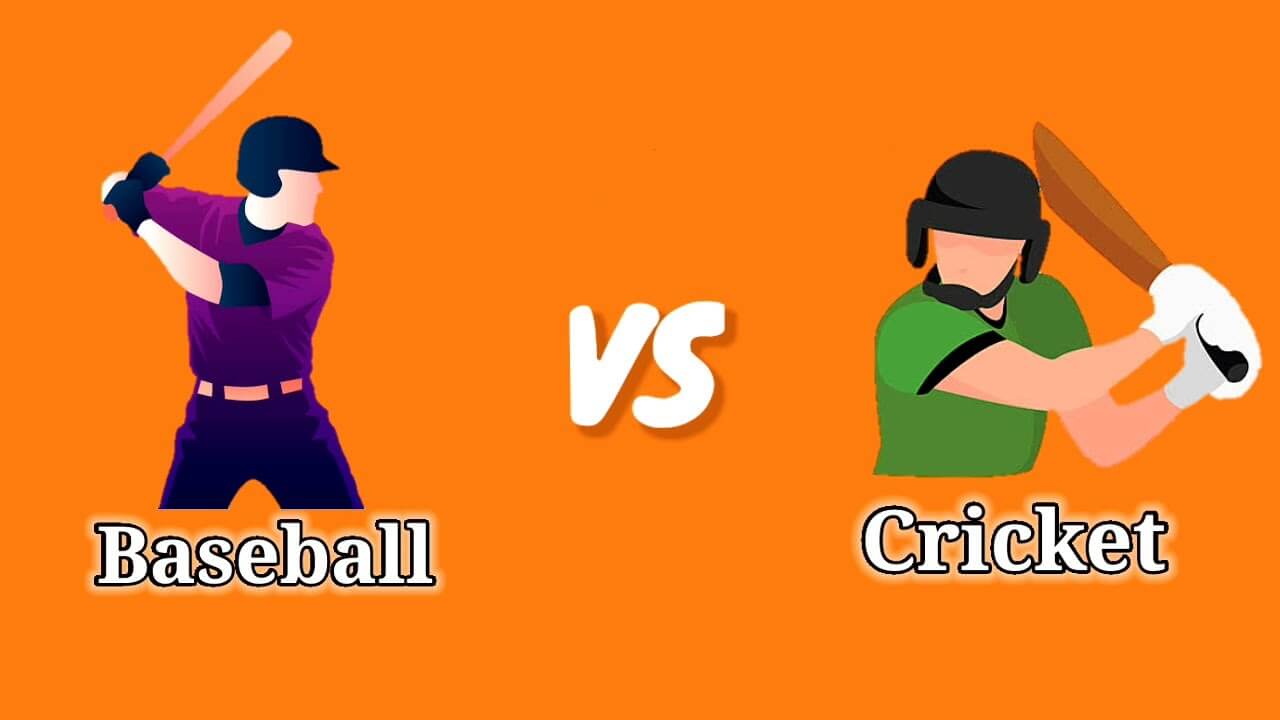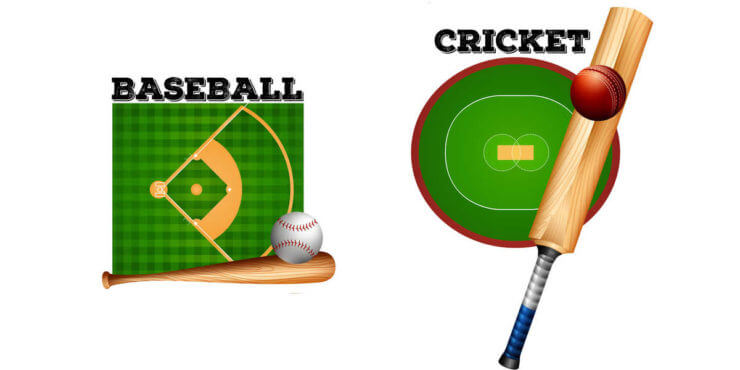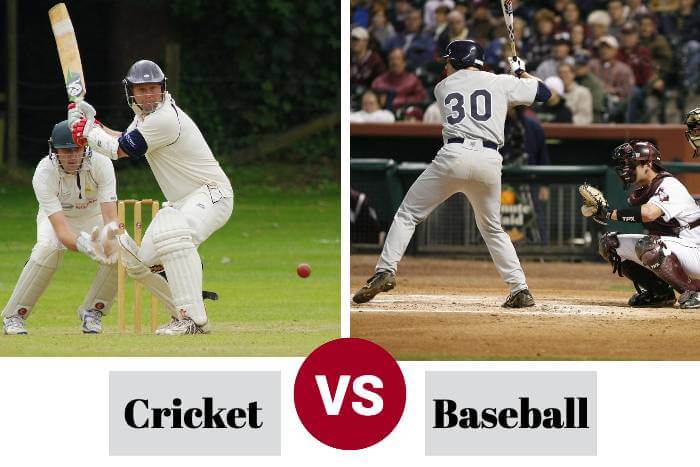Cricket and baseball, two beloved sports that have captivated fans worldwide, may seem similar at first glance. However, a deeper analysis reveals distinct differences in their histories, rules, equipment, and gameplay. In this comprehensive comparison, we will delve into the origins of these sports, examine their unique characteristics, and explore the differences in scoring, field layout, ball specifications, and more.
So, let’s step onto the pitch and diamond, and discover the fascinating world of cricket and baseball.
Origins and Historical Significance

Cricket: A Rich Tapestry Spanning Centuries
Cricket, with its rich history dating back to the 16th century, originated in England and spread to its colonies across the globe. The first recorded cricket match took place in the mid-18th century, and international Test cricket officially began in 1877. Over the years, the game evolved into a professional sport played in numerous nations, captivating fans with its strategic gameplay and thrilling matches.
The International Cricket Council (ICC) was established to govern and promote the sport globally, leading to the creation of prestigious tournaments such as the Cricket World Cup.
Baseball: A Classic American Pastime
Baseball, often hailed as America’s national pastime, emerged in the 18th century and gained popularity in the United States. Although its exact origins are debated, early versions of the game were played in England before being brought to North America by British immigrants. The sport grew in prominence, and professional leagues were established in the 19th century.
The World Baseball Softball Confederation (WBSC) now oversees international competitions, including the coveted World Series. Baseball has found a dedicated following in countries like Japan, Cuba, and the Dominican Republic, contributing to its global appeal.
Field Layout and Equipment

Cricket: The Oval and Wickets
Cricket fields are characterized by their oval shape, with a central rectangular area known as the pitch. The pitch holds significant importance as it serves as the focal point of the game. It is here that the bowler delivers the ball to the batsman, who attempts to score runs.
The field also features two sets of three wooden stumps called wickets, which the batting team defends. The batsman stands in front of the wicket, ready to face the bowler’s delivery. The size of a cricket pitch is 22 yards (20.1 meters), providing ample space for the game to unfold.
Baseball: The Diamond and Bases
In contrast, baseball fields take on a diamond shape, with distinct bases positioned at each corner. The bases, including first base, second base, third base, and home plate, create a path for the batter to run and score points. The pitcher’s mound, located in the center of the diamond, serves as the launching point for the pitcher’s throws.
The distance between each base is 90 feet (27.4 meters), creating a dynamic playing field that demands speed and agility from the players. The diamond layout enhances strategic gameplay and allows for exciting base running and defensive plays.
Equipment: Bats, Balls, and Protective Gear
Cricket and baseball players utilize different equipment tailored to the specific demands of each sport. Cricket bats, typically made of willow wood, feature a wide, flat face that allows batsmen to strike the ball with precision and control. Baseball bats, on the other hand, are narrower and rounder, enabling batters to make contact with the smaller baseball.
The balls used in cricket and baseball also differ in size, weight, and composition. A cricket ball, covered in red leather and stitched with twine, is slightly smaller than a baseball. It weighs between 5.5 and 5.75 ounces (155.9 – 163 grams) and is known for its hardness, making it challenging to hit. In contrast, a baseball has a larger circumference of 9 to 9.25 inches and weighs between 5 and 5.25 ounces (141.7 – 148.8 grams). Baseballs are often composed of a cork or rubber center, wrapped in yarn and covered with two pieces of leather.
Protective gear also varies between the two sports. In cricket, players wear helmets, pads, gloves, and abdominal guards to shield themselves from potential injuries caused by fast-paced bowling. Baseball players, primarily batters and catchers, wear helmets, chest protectors, shin guards, and mitts to safeguard themselves during gameplay.
Scoring and Gameplay

Scoring Runs in Cricket
The primary objective in both cricket and baseball is to score runs. In cricket, runs are scored when the batsman hits the ball and runs to the opposite end of the pitch, swapping positions with the non-striking batsman. If the ball crosses the boundary rope on the ground, the batting team earns four runs. If the ball clears the boundary in the air, it results in six runs. The cumulative score of runs determines the team’s total in a match.
Scoring in Baseball: Running the Bases
In baseball, offensive players aim to advance around the bases and touch home plate to score a run. The batter, after hitting the ball, runs counterclockwise to first base. Subsequently, the runner progresses from base to base, aiming to reach home plate without being put out by the defensive team. If a batter hits the ball beyond the designated field and it cannot be fielded, it is considered a home run, resulting in an automatic run.
Innings and Overs: The Structure of the Games
Cricket and baseball differ in the structure of their games. In cricket, matches can span multiple days and are divided into innings. Each team has two innings in Test matches, with each inning consisting of the batting team facing a specific number of overs. Limited-overs cricket, such as One Day Internationals (ODIs) and Twenty20 (T20) matches, features a single inning per team, with a fixed number of overs (usually 50 or 20).
Baseball, on the other hand, is divided into innings. Each team has a turn to bat and field in each inning, and the game is typically played over nine innings. However, extra innings can occur if the score is tied after the regulation nine innings. In baseball, there are no overs, and the game progresses based on outs and innings.
Bowling and Pitching: Unique Techniques
Bowling in cricket and pitching in baseball require different techniques and strategies. In cricket, bowlers deliver the ball to the batsman, aiming to dismiss them by hitting the stumps or inducing them to make a mistake. Bowlers can vary their deliveries by using different grips, spins, and speeds, creating challenges for the batsman. In Test matches, bowlers can bowl continuously, while limited-overs formats restrict the number of overs a bowler can bowl.
In baseball, the pitcher stands on the pitcher’s mound and throws the ball toward the batter. Pitchers employ various pitches, such as fastballs, curveballs, and changeups, to deceive the batter and prevent them from making solid contact. Unlike cricket, where multiple bowlers can operate from each end, baseball features a single pitcher who remains on the mound until they are substituted by the team’s coach.
Strategy and Tactics

Field Placement and Defensive Strategies
In cricket, fielders are strategically placed on the field to maximize the chances of dismissing batsmen. Captains can position fielders based on the bowler’s style, batsman’s strengths, and game situation. Specific rules govern field placements during various overs, allowing teams to adapt their strategies accordingly. Unlike baseball, fielders in cricket do not wear gloves, except for the wicketkeeper who stands behind the batsman.
Baseball employs a different defensive strategy, relying on choreographed shifts and tactical sacrifices to gain an advantage. Fielders can adjust their positions based on the batter’s tendencies, aiming to minimize the chances of hits and maximize the possibility of outs. Intentional walks, intentional errors, and coordinated plays contribute to the strategic nature of the game, emphasizing the importance of situational awareness and tactical decision-making.
Coach’s Role and Player Autonomy
In cricket, the captain assumes a significant role in making strategic decisions on the field. Coaches are limited in their interventions and primarily act as observers during the game. The captain is responsible for setting the field, making bowling changes, and guiding the team’s overall strategy. This player-centric approach places the onus on the captain to make quick decisions based on the unfolding game situation.
In baseball, managers and coaches play a more active role in directing players during the game. They often communicate specific plays, defensive shifts, and pitching strategies to the players on the field. Coaches provide real-time guidance and make substitutions based on the team’s needs, contributing to the tactical intricacies of the sport.
Popularity and Global Reach

Cricket’s Global Appeal
Cricket enjoys a significant following worldwide, particularly in countries with a rich cricketing heritage. Nations like India, Australia, England, Pakistan, and South Africa boast passionate fan bases and produce top-tier cricketers.
The sport has over 2 billion fans globally, with international tournaments like the Cricket World Cup drawing immense viewership and support. While cricket’s popularity extends beyond its traditional strongholds, it continues to thrive in former British colonies and cricket-loving nations.
Baseball’s Reach Across Borders
Baseball, often associated with American culture, has gained popularity beyond the United States. The sport has a dedicated following in countries like Japan, Cuba, the Dominican Republic, and South Korea. Major League Baseball (MLB) showcases top-level talent and attracts fans from around the world.
While baseball’s fan base is smaller compared to cricket, the sport’s global appeal continues to grow, with international competitions showcasing the skills of players from diverse backgrounds.
Women in Cricket and Baseball

Women’s Cricket: A Rich Legacy and Growing Momentum
Women have been an integral part of cricket since its early days. The first recorded women’s cricket match took place in England in 1745, paving the way for the development of women’s cricket clubs and associations. Women’s cricket gained momentum in the 20th century, with the formation of the Women’s Cricket Association and the introduction of international competitions.
Today, teams like Australia, India, and England compete at the highest level, showcasing the immense talent and dedication of women cricketers.
Women’s Baseball: A Rising Presence
While women’s baseball has faced various challenges, it has experienced a resurgence in recent years. Leagues and organizations have been established to promote and develop women’s baseball, providing opportunities for female athletes to showcase their skills. Countries like the United States, Australia, Japan, and Canada have active women’s baseball programs, contributing to the growth and recognition of the sport on a global scale.
Conclusion: Celebrating the Unique Charms of Cricket and Baseball
Cricket and baseball, despite their shared origins, have evolved into distinct sports with their own identities and fan bases. The historical significance, field layout, scoring systems, equipment, gameplay, and global reach of these bat-and-ball games set them apart.
Cricket’s timeless elegance, strategic depth, and global appeal have cemented its status as a beloved sport in numerous nations. Meanwhile, baseball’s dynamic gameplay, rich traditions, and enduring popularity in the United States and beyond have solidified its place as an iconic American pastime.








